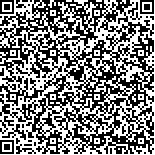|

二维码(扫一下试试看!) |
| 响应面法优化混凝处理造纸法再造烟叶生产废水 |
| Optimization of Coagulation-flocculation Process Using Response Surface Methodology to Treat Effluent from Papermaking Reconstituted Tobacco Production |
| 收稿日期: |
| DOI:10.11980/j.issn.0254-508X.2016.08.008 |
| 关键词: 造纸法再造烟叶 响应面法 废水 混凝 |
| Key Words:papermaking reconstituted tobacco response surface methodology effluent coagulation-flocculation |
| 基金项目:中国烟草总公司科技重大专项“污水的深度处理与生产废弃物处理及回收利用技术研究”(计划文号:中烟办[2012]242号,合同号:110201201033(ZZ-14));云南中烟工业有限责任公司科技计划重点项目“再造烟叶生产废水零排放关键技术研究及应用”(计划文号:滇烟工技[2015]48号,任务书编号:2015GY01)。 |
| 作者 | 单位 | | 曹恩豪1 | 1.昆明理工大学材料科学与工程学院,云南昆明,650093 | | 李 军1 | 1.昆明理工大学材料科学与工程学院,云南昆明,650093 | | 胡 劲1 | 1.昆明理工大学材料科学与工程学院,云南昆明,650093 | | 王玉天1 | 1.昆明理工大学材料科学与工程学院,云南昆明,650093 | | 王开军1 | 1.昆明理工大学材料科学与工程学院,云南昆明,650093 | | 段云彪1 | 1.昆明理工大学材料科学与工程学院,云南昆明,650093 | | 关 平2 | 2.云南中烟再造烟叶有限责任公司,云南昆明,650106 | | 徐广晋2,* | 2.云南中烟再造烟叶有限责任公司,云南昆明,650106 |
|
| 摘要点击次数: 6823 |
| 全文下载次数: 1814 |
| 摘要:以聚合硫酸铁(PFS)为絮凝剂,阳离子聚丙烯酰胺(CPAM)为助凝剂,絮凝处理造纸法再造烟叶生产废水,并采用响应面法考察了絮凝剂用量、助凝剂用量及pH值对絮凝效果的影响。结果表明,通过单因素实验确定响应曲面设计的自变量中心点为:PFS用量3150 mg/L、CPAM用量11 mg/L、pH值7.5。采用中心复合设计方法(CCD),建立了以PFS用量、CPAM用量及pH值为自变量的两个二次回归模型,两个模型均显著(P<0.0001);对絮凝率和电导率影响最大的因素均为pH值,其与PFS用量、CPAM用量的交互作用都显著。最优工艺参数为PFS用量2859 mg/L、CPAM用量14.9 mg、pH值8.0,该条件下絮凝率为67.6%,电导率为6.18 mS/cm。验证实验结果表明,响应面法的预测值与实际值吻合较好,是一种优化废水絮凝的有效方法,建立的模型可用于优化工艺参数。 |
| Abstract:In order to treat papermaking reconstituted tobacco effluent, a coagulation-flocculation process was used with PFS as coagulant and CPAM as flocculant. Response surface methodology (RSM) was utilized to optimize this process. The results showed that, PFS dosage of 3150 mg/L, CPAM dosage of 11 mg/L and pH value of 7.5 were chosen to be the center point of the response surface design and to investigate the effects on coagulation-flocculation rate and electrical conductivity. Two quadratic regression models with PFS dosage, CPAM dosage and pH value as independent variables were developed based on acentral composite design (CCD). And the analysis of variance indicated that both the two models were significant (P<0.0001). pH value had a greater effect on both coagulation-flocculation rate and electrical conductivity than the other two factors. Moreover, the interaction between pH value and PFS dosage and the interaction between pH value and CPAM dosage both were significant. The optimal PFS dosage, CPAM dosage and pH value were 2859 mg/L, 14.9 mg/L and 8.0 respectively, the coagulation-flocculation rate and electrical conductivity were 67.6% and 6.18 mS/cm respectively under the optimal conditions. The experimental data agreed well with the model predicted values, and also showed that the regression equations could be used as the theoretical basis for using coagulation-flocculation process to treat papermaking reconstituted tobacco effluent. |
| 查看全文 HTML 查看/发表评论 下载PDF阅读器 |
|
|
|